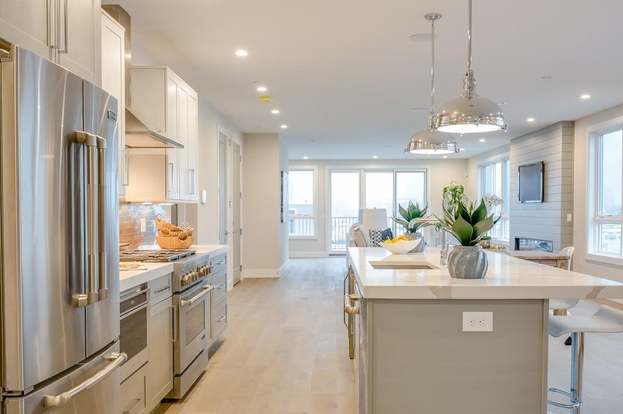5 Tips for a Wood Accent Wall in Your Boston Home
Wood accent wall have been all over Pinterest and Instagram for the past few years, and the pallet wall idea trend doesn’t show signs of losing steam any time soon. But will it work in your Boston home?
That depends.
If your style is contemporary and casual, a modern wood accent wall could be just the focal point you need to tie together a family room with a warm, rustic touch. On the other hand, if you live in a historic home or a tend to like a more formal look, reclaimed lumber may not be the way to go for you, as rough old boards could stick out like a sore thumb.
It’s also important not to go overboard, as too much rough-sawn wood will overpower any house. Remember, too, that not every future buyer will be as in love with the look as you are, so keep your project well within the world of an “accent” instead of paneling a whole room to look like a barn to protect your resale value.
Ready to get started? These tips will help make sure your project is a success.
Tips for Building a Reclaimed Wood Accent Wall
1. Hit the Salvage Yard
The first step to building a wood accent wall with lots of visual interest is to start with great wood. You don’t have to be stuck with crummy old shipping pallets, either. Living in New England means being surrounded by history, and there are many architectural salvage shops filled with antique trim and lumber taken from old homes. Try these first to find wood with real character.
2. Fake It
If you can’t find salvaged wood that you like, you can use new boards from a building supply shop. Try mixing several species of wood in a random pattern to get a unique look, or use a few different stains in gray and whitewashed tones to make your wood look older. Shiplap paneling is another great way to add texture to an accent wall, and you can paint it or stain it for a cohesive finish instead of a mix-and-match look.
3. Back Paint the Surface
If you use flat boards instead of shiplap paneling, be sure to paint the wall you plan to cover before attaching your wood. Use dark brown or black paint, which will minimize the small cracks between boards. Instead of showing a bright white line in the gaps, the dark color will just look like a shadow.
4. Use a Level
Reclaimed wood is rarely perfectly square, so don’t rely on lining a long board up with the floor or ceiling for a level look. Use your level to install the first plank and work from there. This may mean that you have to scribe the board along the floor and trim of some excess to get a perfect fit, but that extra step is worth it to have all the lines of your paneling perfectly straight.
5. Skip the Screws
Screwing your boards to the wall may be extra secure, but it won’t look very good to be left with all those visible screw heads. Use a pneumatic nailer instead, making sure to hit the boards at every stud to hold them in place. For rough lumber, the nail will likely disappear from view without too much fuss, and any mark will just add character. If you’re using smooth, new boards, a bit of matching wood putty will disguise the nail hole.
A wooden accent wall can make an outstanding addition to your living space, and there are lots of ways to make memorable patterns for a totally one-of-a-kind project. If you have your heart set on a wood accent wall, New England Building Supply can set you up with all the materials and hardware you need to get the job done right.

